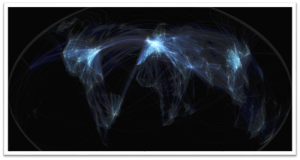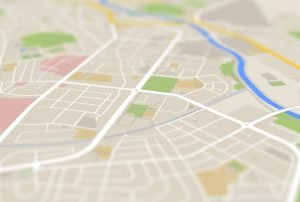Other than Earth’s maps, did you know there are human’s maps? Genome maps, also known as genetic maps, are maps used to locate and identify the position of genes on chromosomes. In the study of genetics, Genome mapping helps analyze the environment and the conditions of the genes. Therefore, in Genomics, there are several applications of genome maps. Below are some of the typical applications of Genome maps.
1. Risk Assessment
Genome maps help in understanding the human genome system. Analyzing and understanding the conditions of the genes helps assess the conditions of genes. Scientists use the knowledge of Genome mapping to evaluate the effect caused by environmental factors on human genes. Similarly, the mapping technique helps in reducing the likelihood of heritable mutations.
2. DNA Forensics
In the study of DNA forensics, genome maps are used to develop DNA profiles. Genome maps are more precise in identifying and examining the quality of the DNA sequences. In this study, forensic scientists use genome maps to analyze the DNA species and place them in their classes. The technique has numerous applications in DNA-related operations, like identifying potential suspects.
3. Biotechnology
Biotechnology relies on genome mapping to solve problems and make valuable products. In the production of genetic products, biotechnology engineers use genome maps to check the compositions of the raw materials and the conditions required.
4. Bioarchaeology
Bioarchaeology is the study that deals lay its foundation in examining human remains. In this study, archeologists employ several bio-related tools to scan and group the genes of the remains. Genetic mapping has been on the frontline providing effective and reliable tools used to check remaining genetics profiles.
5. Evolution
Today, scientists have introduced modern ways of tracking gene change. One of these methods is the Genetic mapping technique. Genome maps help in studying and tracking evolution changes through germline mutations.
6. Molecular medicine
Through Genome mapping, effective drugs are manufactured. These maps identify the cause of the disease. Thus the medications that are manufactured focus more on treating symptoms. Here, genetic mapping and screening are critical in determining the affected DNA and the susceptibility to diseases. As a bonus, genome mapping is helpful in the creation of DNA-based products.
7. Bioprocessing
In bioengineering, genome mapping has vast applications. Genome maps are helpful in the creation of valuable products by using living things. In the pharmaceutical industry, for example, the knowledge of genome mapping is extensively used in producing effective drugs.
8. Energy Source
Recently, there have been improvements in the production of fossil-based products. Due to the increased demand for energy, scientists are inventing new energy sources now and then. Today, genome mapping is used to supplement the production of energy. For example, Methane-producing organisms undergo the methanogenesis process to produce fuel-grade methane.
9. Environmental applications
Besides health applications, genome mapping has environmental applications. The mapping technique is essential in developing environmental tools which can monitor or detect pollutants.





